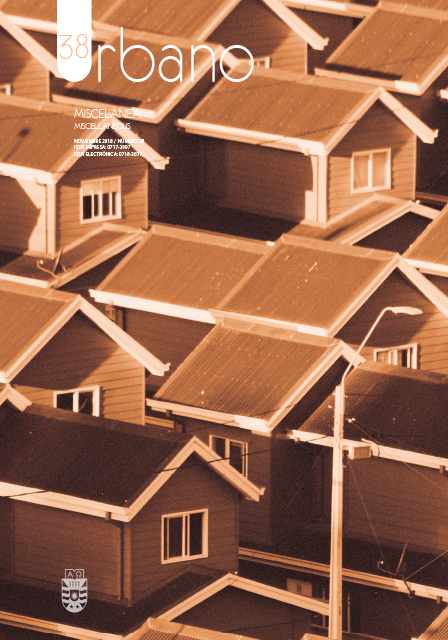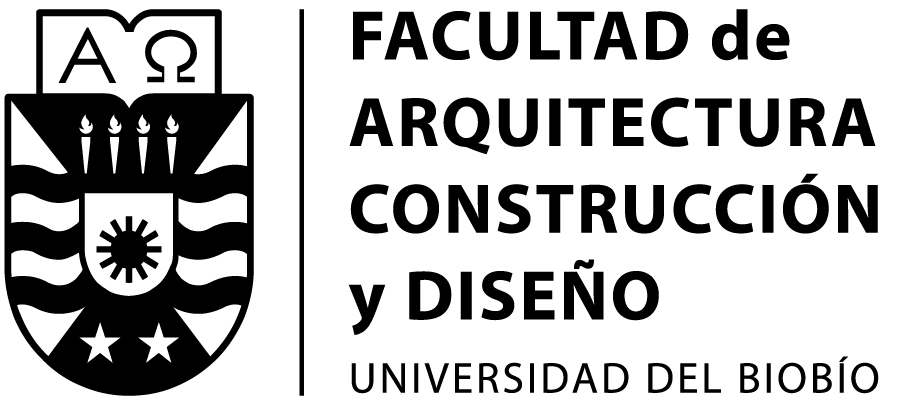Cartografías participativas y producción de datos sociales en escenarios patrimoniales. Posibilidades de reutilización comunitaria de las “Ruinas de Enacar”, sector Chambeque, Lota, (Chile)
DOI:
https://doi.org/10.22320/07183607.2018.21.38.03Palabras clave:
cartografías participativas, patrimonio industrial, uso comunitario, conservación de sitios históricos, bienes culturalesResumen
El siguiente trabajo tiene el objetivo de entregar insumos primarios para una posible reutilización cultural y turística del patrimonio y del paisaje minero de las “Ruinas de ENACAR”, sector Chambeque, Lota Alto. Para ello, se planificó un ejercicio colectivo y cartográfico donde participaron habitantes, organizaciones locales y actores académicos interesados en explorar en los usos y apropiaciones del patrimonio por parte de la ciudadanía local. El mapeo participativo se llevó a cabo durante varias jornadas de trabajo con el apoyo técnico de académicos y profesionales especializados en patrimonio industrial. Las actividades desarrolladas consistieron en el análisis histórico, actual y futuro del sitio, para lo cual se dispusieron soportes gráficos, fotografías históricas de los trabajadores en sus labores industriales -que facilitaron la conexión afectiva con el espacio- y una presentación con fotografías del sitio y sus inmuebles, en su estado de conservación actual. Estas jornadas contaron con la asistencia de casi un centenar de actores locales, lo que permitió recolectar visiones heterogéneas respecto al territorio, sus valores como patrimonio industrial y posibles usos para su reutilización cultural y turística.
Descargas
Citas
BRACERAS, Iratxe. Cartografía participativa: herramienta de empoderamiento y participación por el derecho al territorio. Máster en Desarrollo y Cooperación Internacional. Bilbao: Instituto de Estudios sobre Desarrollo y Cooperación Internacional, 2012.
BRENNER, Neil. Globalisation as Reterritorialisation: the re-scaling of urban governance in the European Union, Urban Studies, 1999, vol. 36, no 3, pp. 431-451.
BRITO, Alejandra y GANTER, Rodrigo. Ciudad obrera: persistencias y variaciones en las significaciones del espacio barrial. El caso de la Siderúrgica Huachipato y su influencia en el desarrollo urbano del Gran Concepción, EURE [en línea], 2014, vol. 40, no 121, pp. 29-53. [Consultado 26 septiembre 2018]. Disponible en: http://dx.doi.org/10.4067/ S0250-71612014000300002
BRITO, Alejandra y GANTER, Rodrigo. Cuerpos habitados, espacios modelados: el caso de la siderúrgica Huachipato, 1940-1970, Historia 396 [en línea], 2015, vol. 5, no 1, pp. 11- 36. . [Consultado 26 septiembre 2018]. Disponible en: http://www.historia396.cl/index. php/historia396/article/view/56/55
CAIMANQUE, Rodrigo. Regeneración urbana y la disputa por el espacio urbano: el caso de Valparaíso, Chile. En: ARICÓ, Giuseppe; MANSILLA, José y LUCA, Marco. Mierda de ciudad. Una rearticulación crítica del urbanismo neoliberal desde las Ciencias Sociales, pp. 32-44. Barcelona: Polen Ediciones, 2015.
COOKE, Fadzilah M. Maps and counter-maps: globalised imaginings and local realities of Sarawak’s plantation agriculture, Journal of Southeast Asian Studies, 2003, vol. 34, no 2, pp. 265-284.
FONDO INTERNACIONAL DE DESARROLLO AGRÍCOLA (FIDA). Buenas prácticas en cartografía participativa. Roma: FIDA Ediciones, 2009.
GANTER, Rodrigo; SANDOVAL, Daniel; GARCÍA, Daniela y DE LA FUENTE, Helen. Topofilia y cartografías participativas en el sur de Chile, Revista Prisma Social [en línea], 2015, no 15, pp. 440-491. [Consultado 26 septiembre 2018]. Disponible en: Disponible en http://www.isdfundacion.org/publicaciones/revista/numeros/15/secciones/ abierta/a_01_topofilia-cartograf%C3%ADas.html
GANTER, Rodrigo y BRITO Alejandra. Cartografías de lo cotidiano: usos, relatos y disposiciones del espacio en el contexto de la industria minera y textil del Gran Concepción (1940-1973), Revista Austral de Ciencias Sociales, 2017, no 33, pp. 37-57. [Consultado 26 septiembre 2018]. Disponible en: http://revistas.uach.cl/index.php/ racs/article/view/1753
GARCÍA CLANCLINI, Néstor. Imaginarios urbanos. Buenos Aires: EUDEBA, 1997
HARVEY, David. La acumulación por desposesión. En: PÉREZ, Margarita y BUENO,
Carmen. (coords.). Espacios globales. México: Plaza y Valdés, 2006, pp. 21-52.
HERNÁNDEZ, Verónica; ENCINAS, María A.; HEWITT, Richard; OCÓN, Blanca; ROMÁN, Lara y ZAZO, Ana. ¿Qué territorio queremos? Estrategias participativas para un futuro común. Observatorio para una Cultura del Territorio [en línea], Madrid, 2016. [Consultado 26 septiembre 2018]. Disponible en: http://observatorioculturayterritorio.org/ wordpress/?page_id=582
HEWITT, Richard; HERNÁNDEZ, Verónica; ZAZO, Ana; OCÓN, Blanca; ROMÁN, Lara y ENCINAS, María. Resilient Futures. Action for Managing Our Environment from the Bottom- Up (1st edition) [en línea], Amsterdam: Elsevier, 2017. [Consultado 26 septiembre 2018]. Disponible en: https://www.elsevier.com/books/participatory-modelling-for- resilient-futures/hewitt/978-0-444-63982-0
HOLSTON, James. La ciudadanía insurgente en una era de periferias urbanas globales: un estudio sobre la innovación democrática, la violencia y la justicia social. En: DELAMATA, G. (ed.). Movilizaciones sociales: ¿nuevas ciudadanías? Reclamos, derechos, Estado en Argentina, Bolivia y Brasil. Buenos Aires: Biblos, 2009, pp. 46-65.
INZULZA, Jorge y GALLEGUILLOS, Ximena. Latino gentrificación y polarización: transformaciones socioespaciales en barrios pericentrales y periféricos de Santiago, Chile, Revista Geografía Norte Grande [en línea], 2014, no 58, pp. 135-159. [Consultado 26 septiembre 2018]. Disponible en: http://dx.doi.org/10.4067/S0718- 34022014000200008
ISIN, Engin y WOOD, Patricia. Citizenship and Identity, Londres: Sage, 1999.
JANOSCHKA, Michael. Geografías urbanas en la era del neoliberalismo. Una conceptualización de la resistencia local a través de la participación y la ciudadanía urbana, Investigaciones Geográficas, 2011, no 76, pp. 118-132.
JANOSHKA, Michael. Gentrificación, desplazamiento, desposesión: procesos urbanos claves en América Latina. Revista INVI [en línea], 2016, vol. 31, n° 88, pp. 27- 71. [Consultado 26 septiembre 2018]. Disponible en: http://www.revistainvi.uchile.cl/ index.php/INVI/article/view/1087
LACARRIEU, Mónica. Nuevas imágenes, nuevos imaginarios urbanos. Espacios y tiempos de la celebración, Jornadas de imaginarios urbanos, Buenos Aires: FADU–UBA, 2006.
LAVAL, Christian y DARDOT, Pierre. Común: Ensayo sobre la revolución en el siglo XXI, Barcelona: Gedisa, 2014.
LEFEBVRE,Henry.Elderechoalaciudad, Barcelona:Península,1968.
LINDÓN, Alicia y HIERNAUX, Daniel. La Geografía Humana: Un camino a recorrer. En: Hiernaux, D. & Lindón, A. (eds.) Tratado de Geografía Humana, Barcelona: Anthropos, 2006, pp. 1-22.
LÓPEZ, M. Isabel y PÉREZ, Leonel. Sustentabilidad del turismo en el patrimonio minero: modelo conceptual e indicadores para el exterritorio carbonífero de Lota y Coronel, EURE [en línea], 2013, vol. 39, no 118, pp. 199-230. [Consultado 26 septiembre 2018]. Disponible en: http://dx.doi.org/10.4067/S0250-71612013000300009
MCCALL, Michael K. Mapeando el territorio: Paisaje local, conocimiento local, poder local. En: BOCCO, Gerardo; URQUIJO, Pedro y VIEYRA, Antonio (eds.). Geografía y ambiente en América Latina. Michoacán: Centro de Investigaciones en Geografia Ambiental, 2011, pp. 221-246.
MITCHELL, Katharyne. Geographies of identity: the intimate cosmopolitan, Progress in Human Geography, 2007, no 31, pp. 706-720.
OSLENDER, Ulrich. Espacio, lugar y movimientos sociales: hacia una espacialidad de resistencia, Scripta Nova. Revista electrónica de Geografía y Ciencias sociales [en línea], 2002, vol. VI, no 115. [Consultado 26 septiembre 2018]. Disponible en: http://www. ub.es/geocrit/sn/sn-115.htm
ONG, Aihwa. Neoliberalism as Exception: Mutations in Citizenship and Sovereignty, Durham/Londres: Duke U.P, 2006.
PÁJARO, David. La cartografía de tierras: un contraste epistemológico, Revista de Geografía Agrícola [en línea], 2010, no 44, pp. 9-23. [Consultado 26 septiembre 2018]. Disponible en: http://www.redalyc.org/articulo.oa?id=75721681002
PÁJARO, David y TELLO Enriqueta. Fundamentos epistemológicos para la cartografía participativa. Revista Etnoecológica [en línea], 2014, vol. 10 n°, pp. 1-20. [Consultado 26 septiembre 2018]. Disponible en: https://www.researchgate.net/ publication/296665874_Fundamentos_epistemologicos_para_la_cartografia_ participativa
PAULSEN, Alex. Negocios inmobiliarios, cambio socioespacial y contestación ciudadana en Santiago Poniente. El caso del barrio Yungay: 2000-2013. En: HIDALGO, Rodrigo y JANOSCHKA, Michael (eds.). La Ciudad Neoliberal. Gentrificación y exclusión en Santiago de Chile, Buenos Aires, Ciudad de México y Madrid. Santiago de Chile: Pontificia Universidad Católica de Chile; Madrid: Universidad Autónoma de Madrid, 2014, pp. 75- 100.
PÉREZ, Miguel. Ciudadanía urbana y derecho a la ciudad: hacia una política del habitar. En: GASIC, Ivo (comp.) Reapropiaciones de Henri Lefebvre: crítica, espacio y sociedad urbana, Santiago de Chile: Ed. Triángulo, 2015, pp.10-39.
PÉREZ, Leonel y MATUS, Christian. De la resistencia urbana al urbanismo ciudadano. Sujetos y estrategias patrimoniales en Concepción metropolitano, Chile, Revista de Geografía Norte Grande [en línea], 2017, no 66, 167-192. [Consultado 26 septiembre 2018]. Disponible en: http://dx.doi.org/10.4067/S0718-34022017000100010
RAMBALDI, Giacomo. Who owns the map legend ?, URISA Journal, 2005, vol. 17, pp. 5-13.
RISLER, Julia y ARES, Pablo. Manual de mapeo colectivo: recursos cartográficos críticos para procesos territoriales de creación colaborativa, 1a ed., Buenos Aires: Tinta Limón, 2013. SANTOS, Milton. La naturaleza del espacio: técnica y tiempo: razón y emoción, Barcelona: Ariel, 2000.
SEQUERA, Jorge y JANOSCHKA, Michael. Ciudadanía y espacio público en la era de la globalización neoliberal. ARBOR Ciencia, Pensamiento y Cultura [en línea], 2012, vol. 188, no 755, pp. 515-527. [Consultado 26 septiembre 2018]. Disponible en: http://arbor. revistas.csic.es/index.php/arbor/article/view/1481
SILVA, Armando. Imaginarios urbanos, Bogotá: Arango Editores, 2006.
YORI, Carlos M. Ciudad y sustentabilidad II. Componentes y contenido de un proyecto sustentable de ciudad a partir del concepto de topofilia. Una aproximación al contexto urbano de América Latina. Bogotá: Universidad Piloto de Colombia, 2005.
VÉLEZ, Irene; RÁTIVA, Sandra y VARELA, Daniel. Cartografía Social como metodología participativa y colaborativa de investigación en el territorio afrodescendiente de la cuenca alta del Río Cauca, Cuadernos de Geografía. Revista Colombiana de Geografía [en línea], 2012, vol. 21, no 2, pp. 59-73. [Consultado 26 septiembre 2018]. Disponible en: https://revistas.unal.edu.co/index.php/rcg/article/view/25774/36770
VIVALLOS, Carlos y BRITO, Alejandra. Configuración y estructura del espacio urbano del Gran Concepción. Hilario Hernández Gurruchaga y los estudios regionales, Revista de Humanidades, 2011, n° 23, pp. 119-133.
Publicado
Cómo citar
Número
Sección
Licencia
El contenido de los artículos y reseñas que se publican en cada número de Urbano, es responsabilidad exclusiva de los autores y no representan necesariamente el pensamiento ni comprometen la opinión de la Universidad del Bío-Bío.
Las/os autoras/es conservarán sus derechos de autor, sin embargo, garantizarán a la revista el derecho de primera publicación y difusión de su obra. La publicación del artículo en Urbano estará sujeta a la Licencia de Reconocimiento de Creative Commons CC BY-SA que permite a otros compartir-copiar, transformar o crear nuevo material a partir de esta obra para cualquier propósito, incluso comercialmente, siempre y cuando se reconozcan la autoría y la primera publicación en esta revista, y sus nuevas creaciones estén bajo una licencia con los mismos términos.![]()























